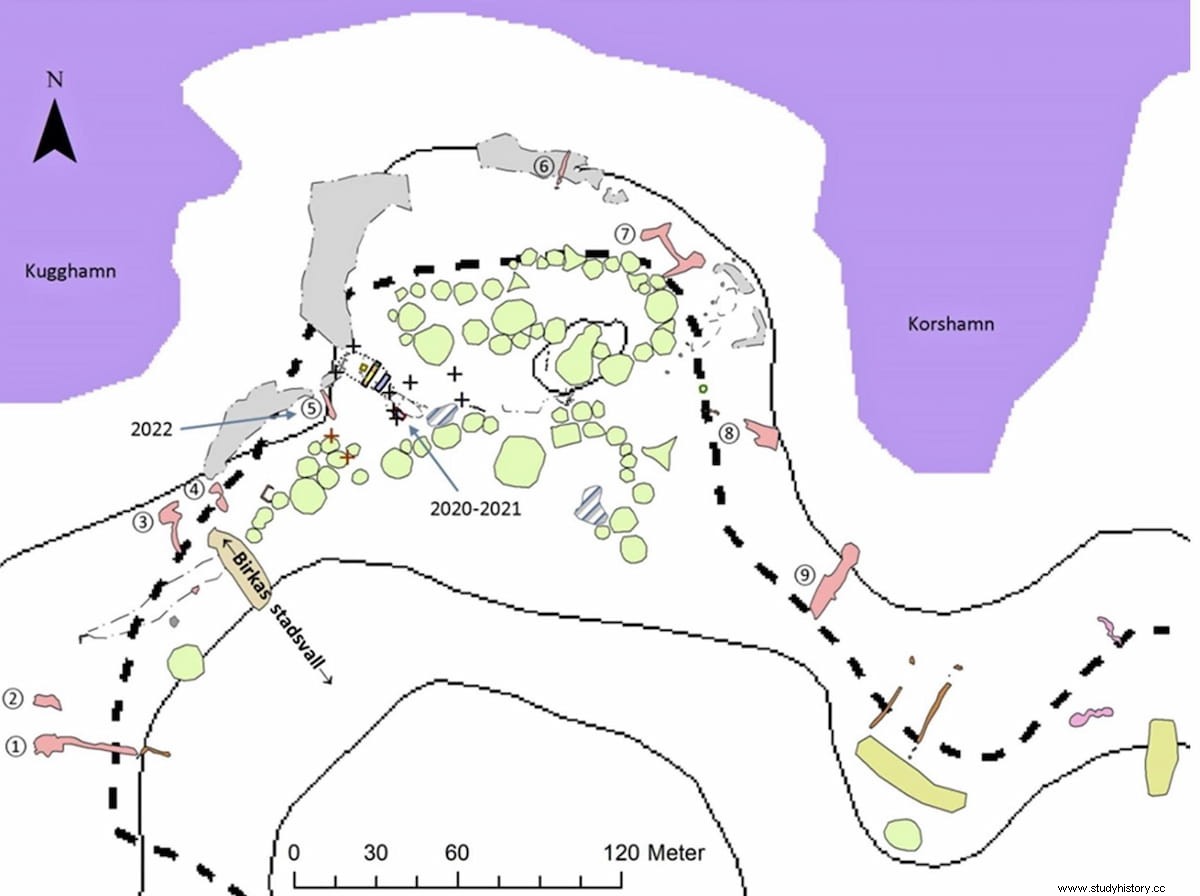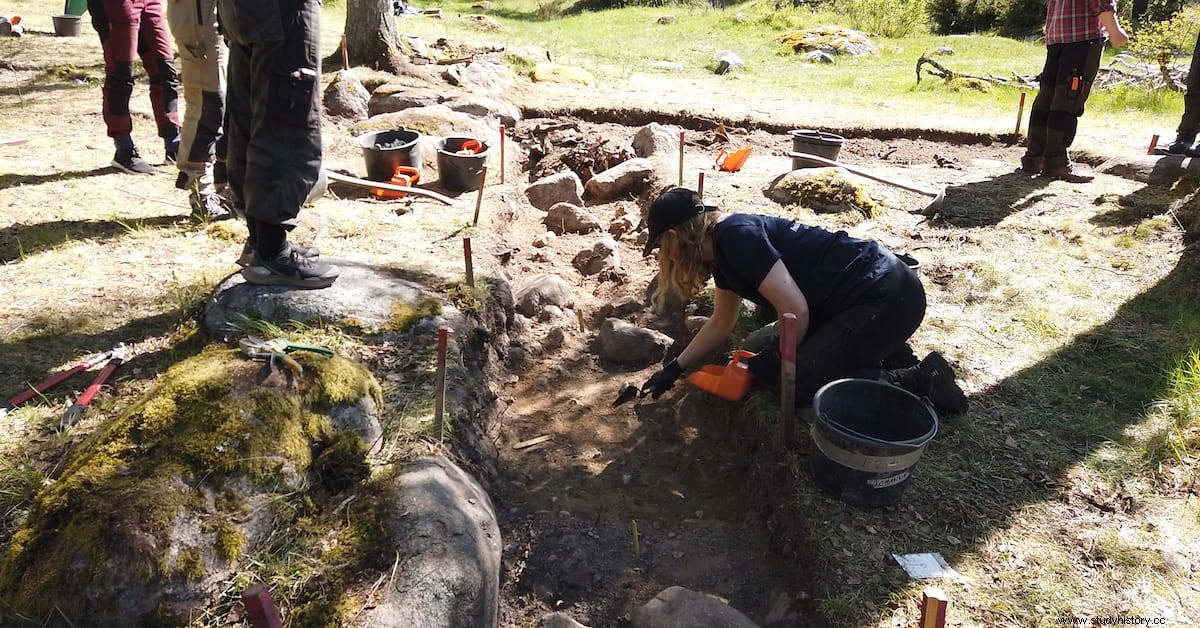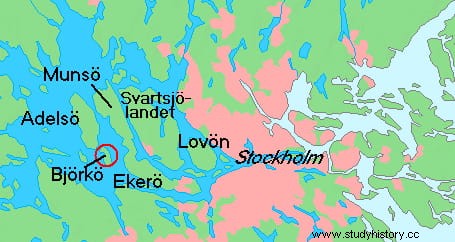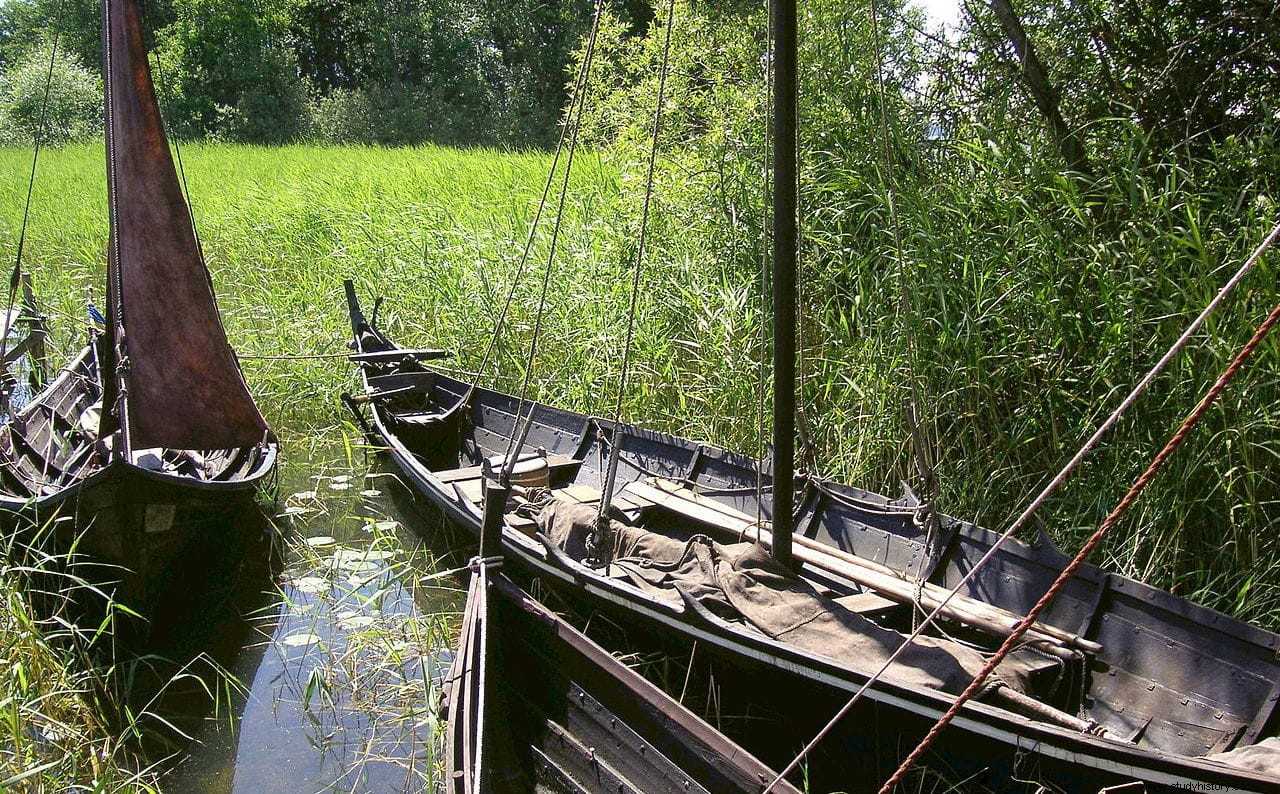Archaeologists from the Stockholm University Archaeological Research Laboratory have located a unique shipyard from the Viking Age at the Birka site on the island of Björkö in Lake Mälaren. The discovery calls into question previous theories about how maritime activities were organized in the Viking Age.
A site like this has never been found, it is the first of its kind, but the findings convincingly show that it was a shipyard , says Sven Isaksson, Professor of Archaeological Sciences at Stockholm University, who led the investigations together with Sven Kalmring, Associate Professor at Stockholm University and an expert on harbors and urbanization in the Viking Age at the Center for Baltic and Scandinavian Archaeology. Schleswig.
The site found consists of a stone-lined depression in the coastal area from the Viking Age with a wooden jetty at the bottom. Finds from the site consist of large quantities of ship's rivets, both used and unused, slate whetstones and woodworking tools.

The finds of artifacts in the area show very clearly that this is where the people equipped their ships says Sven Isaksson. Several of the remains had been observed in previous excavations, but it is thanks to the latest findings that it has been possible to have a global vision.
Thanks to systematic inventory, mapping and drone surveys, we can now show that Birka, in addition to the urban environment, has a very rich maritime cultural landscape, with remains of all kinds, from jetties to boat launching areas and shipyards , says Sven Isaksson.

Ships and navigation are characteristic of the Viking Age in the Nordic countries, both for warfare and for trade. An expression of long-distance trade from the Viking Age is the city-like trading posts that sprung up in the Nordic countries at that time. In Sweden, the best-preserved example is the Birka site on the island of Björkö in Lake Mälaren, a UNESCO World Heritage Site.
It is not only about the first urban environments, but shows an intense exchange of commercial goods and ideas between people says Sven Kalmring.
Birka's city walls functioned not only as a defense, but also as a legal, economic and social border. Previous research on the Birka port facilities has been carried out mainly inside the city wall, in the area known as the Black Land port, and below the so-called Garrison. The newly discovered shipyard at Kugghamn is located, along with other maritime remains, outside the city wall of Birka, along the north shore of Björkö.

By investigating various maritime features in relation to a possible house site at Kugghamn, we are trying to gain an overview of a very interesting and hitherto archaeologically completely unexplored environment says Sven Kalmring.
In order to obtain starting material that can nuance our knowledge of the maritime cultural landscape of Birka, archaeological investigations continue. Among other things, the remains of a wharf located outside the city wall, similar to the shipyard site and different from the previously investigated port remains in the Black Land, are being investigated. Another question archaeologists are trying to answer is who could dock there.
Could you dock anywhere, or did it matter if it was inside or outside the city wall? There is much to ponder here. But for us, research does not end with field work, it continues in the laboratory. By using laboratory analytical techniques, we obtain more information from fragmentary source material than would otherwise be possible says Sven Isaksson.

Kugghamn is a very common name that is associated with the Cog and Hanseatic period and not the Viking Age. However, the name can be traced back to an original Kuggholmsudd and does not necessarily point to a port location.
